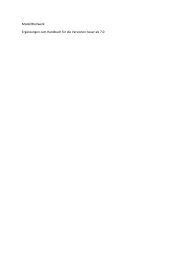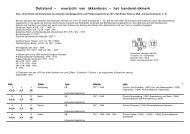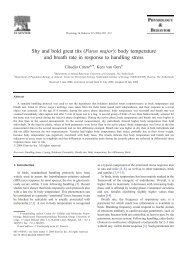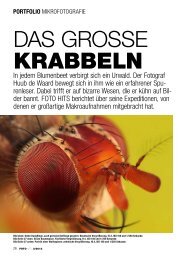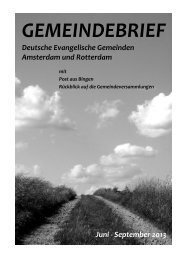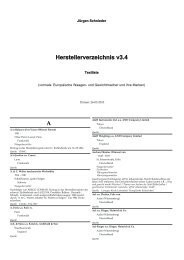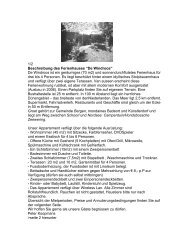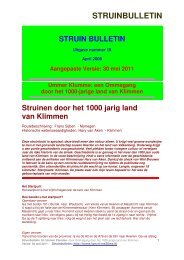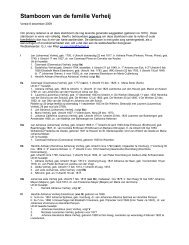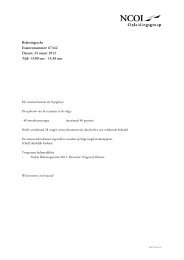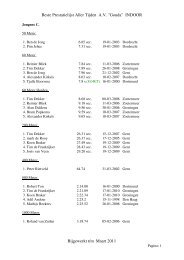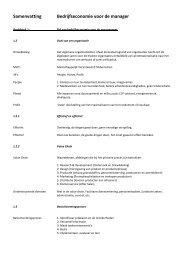The Makassar Malays - Cambridge Journals
The Makassar Malays - Cambridge Journals
The Makassar Malays - Cambridge Journals
You also want an ePaper? Increase the reach of your titles
YUMPU automatically turns print PDFs into web optimized ePapers that Google loves.
416<br />
heather sutherland<br />
social mobility. <strong>The</strong> customs farm was undoubtedly only one source of Ince Ali Asdulah’s wealth.<br />
<strong>The</strong> foundations of his fortune lay in his trading; it was the money earned on his journeys to<br />
Kalimantan and Java which enabled him to pay for the farm – and to win the support of powerful<br />
Dutch and Chinese allies for his ambitious wedding.<br />
Although Dutch descriptions of Malay trade are few and far between in the later eighteenth<br />
century, some general trends can be identified through analysis of the harbourmaster’s registers. 99<br />
<strong>The</strong> mid-century, including the 1770s, showed little development, although Malay skippers<br />
probably remained strong in their traditional commodities of rice and slaves. <strong>The</strong>ir main imports<br />
into <strong>Makassar</strong> were sea products, coconut oil and rice, while marine produce and cloth dominated<br />
exports. <strong>The</strong>y were probably also bringing slaves into South Sulawesi. By the 1780s they had<br />
consolidated their decades-long domination of coconut oil imports, most of which came in from<br />
Ende on Flores, which was a centre of Sulawesian settlement and one of the archipelago’s main slave<br />
markets. <strong>The</strong> <strong>Malays</strong> were shipping in almost 400 slaves a year, mainly from Ende. <strong>The</strong>y were still<br />
importing rice, raw cotton and Indian textiles. <strong>The</strong>ir main exports were coins (rijksdaalders),<br />
Chinese earthenware, Chinese linen and Indian cloth. As was to be expected, given their<br />
commodities, Nusa Tenggara (the Lesser Sundas) was the favoured trading partner of <strong>Makassar</strong>’s<br />
<strong>Malays</strong>. It is estimated that while the share of trade held by other Indonesian groups and locally<br />
born Europeans was declining in the face of the growing Chinese role in commerce, the <strong>Malays</strong> not<br />
only managed to hold their own, but showed a slight strengthening. 100 <strong>The</strong>ir share in the volume of<br />
shipping grew from 2 per cent in the 1720s through 11 per cent in the 1760s, to 15 per cent in the<br />
1780s. 101<br />
<strong>The</strong> VOC archives also provide intermittent information on ship-owners.As is to be expected,<br />
the Kapitans and the farmers seem to be among the wealthiest. In 1715 the <strong>Malays</strong> owned the most<br />
vessels in <strong>Makassar</strong>, a total of thirty: twenty-eight local gonting and two smaller pancallang.<strong>The</strong>re<br />
were thirteen ships (mainly the larger chialoup) possessed by Europeans or mestizos, twenty-eight in<br />
Chinese or peranakan Chinese hands (two chialoup, twenty-five gonting, and one much smaller<br />
pancallang). Forty-four other ships, almost all gonting, were held by Moor Mardijkers (eleven) and<br />
Buginese (nine) while the mercantile Wajorese owned twenty-four. Among the <strong>Malays</strong>, the Kapitan<br />
Ince Cukka owned a gonting and a pancallang, one Ince Jemal, Bumi Parisi, possessed three gonting,<br />
while Ince Kamar and Ince Japara had two each. 102<br />
By the 1730s and 1740s the number of registered ships had shrunk dramatically, probably for<br />
tax reasons. Only four to six <strong>Malays</strong> were listed, all gonting owners, and the numbers of Chinese- and<br />
European-owned vessels had also sharply declined, if not to the same degree – it seems registration<br />
had little to do with actual shipping. 103 Few owners are recorded for 1775: five Europeans, three<br />
Chinese, and a lone Malay. This was Ince Ali Asdullah, who is listed as owning a chialoup of 30 last<br />
(15 tonnes); the ship was 29 years old, so had been built in 1745/46. 104 In 1784 he was still sailing the<br />
same vessel, and this was probably taken over later by his son, Ince Suleiman (Kapitan Melayu since<br />
1789), who is listed in 1790 as owning a 43-year-old chialoup. However, his father appeared as owner<br />
again in 1795. 105<br />
99 Knaap and Sutherland, Monsoon Traders.<br />
100 Ibid, Ch.V.<br />
101 G.J. Knaap, ‘Manning the Fleet’, paper presented at the Conference on Indonesian Social History, Universitas<br />
Indonesia, Dec. 1999, Table 2.<br />
102 VOC 1882 f. 2.<br />
103 For example,VOC 2192 f. 1017, 2628 f. 140g.<br />
104 VOC 3441 f.168.<br />
105 VOC 3905 f. 56, Comite Oost Indische Handel 94, f. 102.



